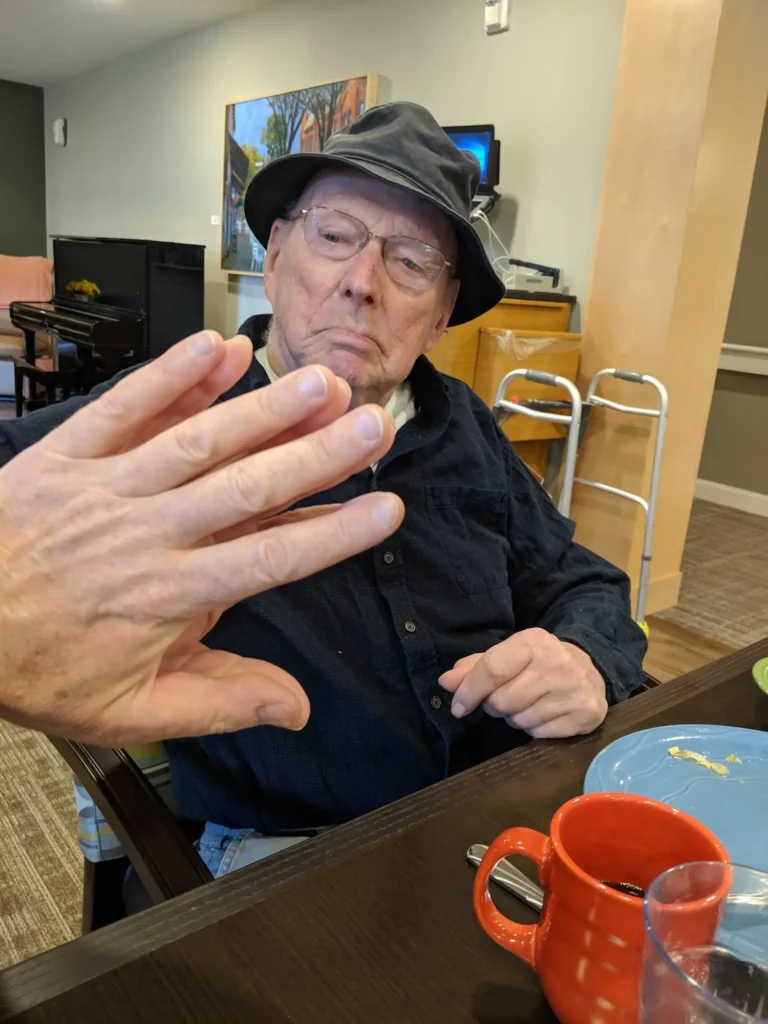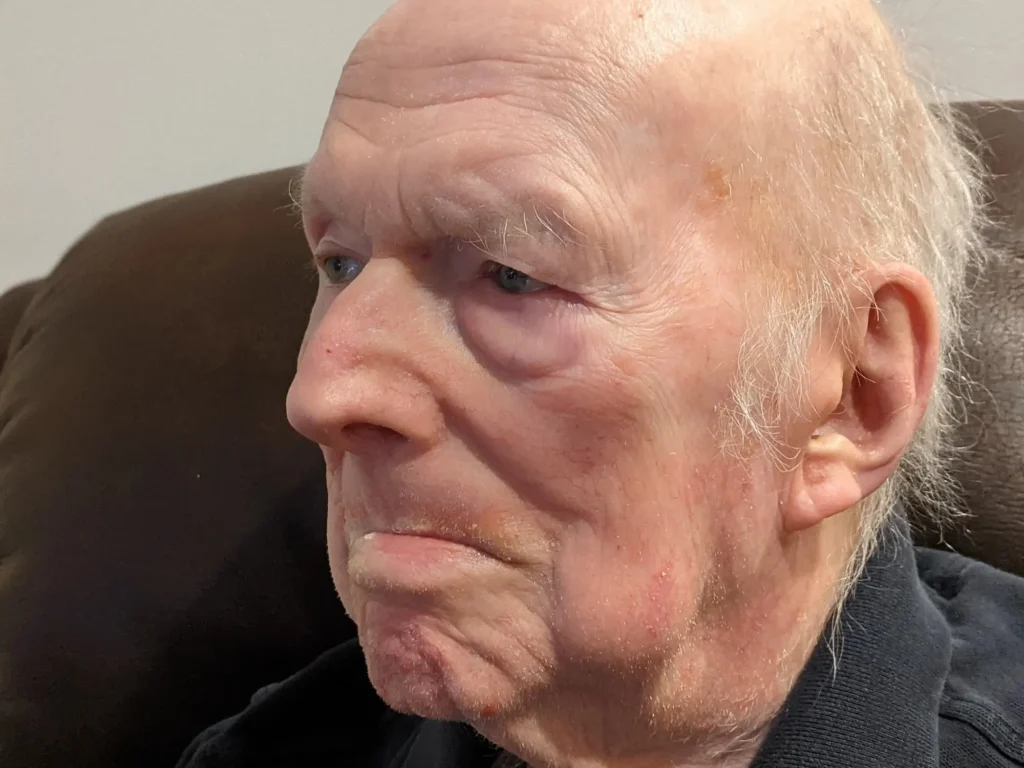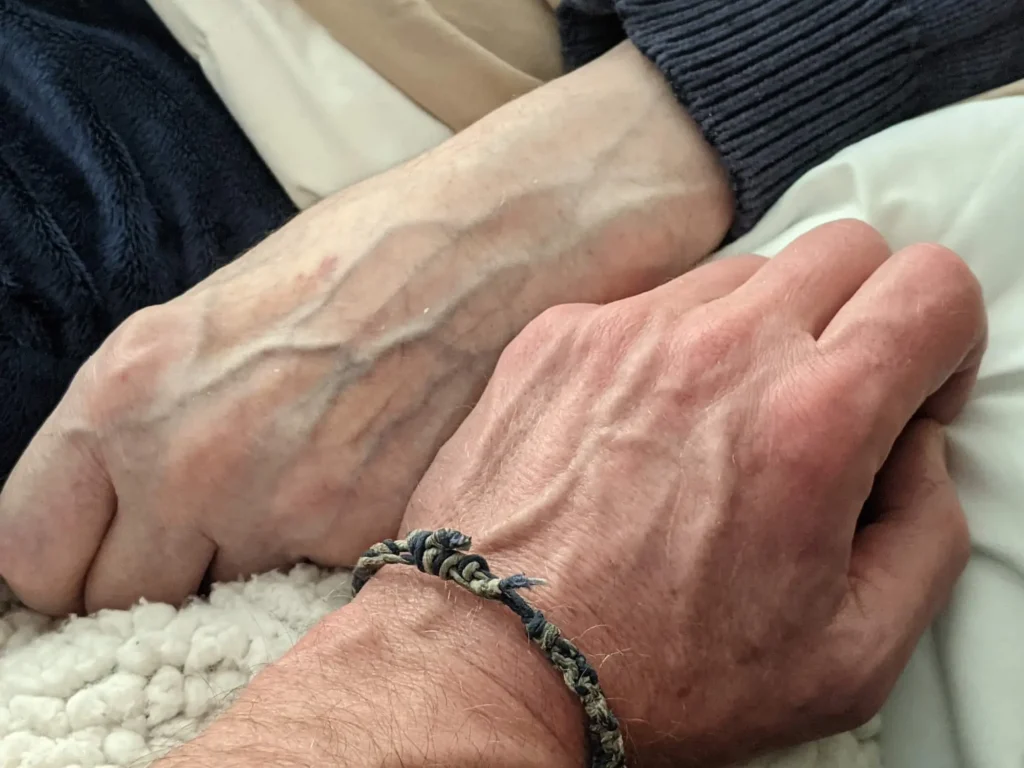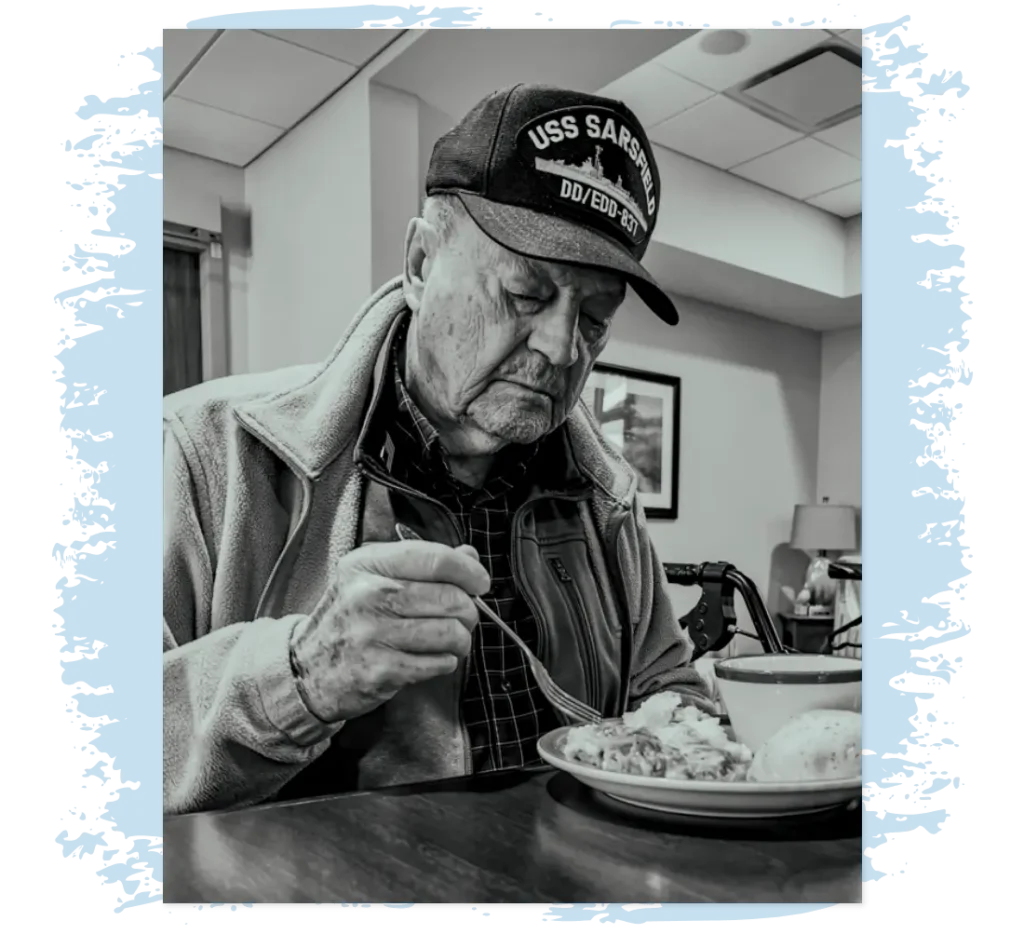What is My Father’s Shirts and how did it come to be?
In November 2017 I made a portrait of my father, Dick Slade, standing on a staircase in the lobby of the Minneapolis Institute of Arts, a place my father was very well-acquainted with after a life of art school presidency and arts patronage. This is the first picture in my 2021 book My Father’s Shirts. It occupies that position because it is a quintessential “before” photograph. Before Alzheimer’s disease dementia became a ruling factor of his life, before he entered the memory care unit, before he went on hospice protocol. Before COVID. A year later I made another portrait of him as the walls were closing in, as the halls of the building where he lived with my mother were beginning to pose an unsolvable maze for him and he wandered into other people’s apartments.
In early 2019 he entered a memory care unit in downtown Minneapolis, and I started photographing him with a sense of purpose. I knew I was losing him. I knew we were losing him. My three siblings were not supportive of my efforts, and my mother remained in denial for many months. As 2019 segued into 2020 and COVID began to settle in, I became bound up with Dad as a special caregiver. I began to publish images and writings about our encounters on Instagram, and almost instantly found a community that supported me. They got me through COVID, and inspired me to publish the book in 2021. Dad died in April 2022.



What inspired you to grapple with dementia?
Dementia pushed me closer to my father. I wanted to be near him in ways we never were during our 60 years together. I wanted to take care of him, perhaps to turn the table and return the favor of his attention. I fed him breakfast, I read to him, I encouraged his ramblings. I wanted to let him know, even if he wasn’t conscious of or able to acknowledge my efforts, that I loved him and I wanted to tell him about things we hadn’t covered during our lifetimes. I was never afraid of his dementia.
It was impossible to know what my father was experiencing as real, so every moment had a spontaneous poetry to it. Almost as though I was recording performance art in motion.
George Slade
How has working on dementia-related art changed you?
I’ve developed a new understanding of art since Dad’s death. Early in my photographic life, I worked as a theater photographer. I appreciated the tableaux created by actors; they were making facsimiles of life. I was a photographer who learned from street photographers, from artists who found poetry in life found on the streets. As I photographed my father, I became aware of a provocative line between truth and fiction. It was impossible to know what my father was experiencing as real, so every moment had a spontaneous poetry to it. Almost as though I was recording performance art in motion. And that’s how I learned to accept my father in his everyday mode. All we had was now. My mother and siblings, however, couldn’t release their dependence on the past. They wanted the man they’d known.
How has My Father’s Shirts been received?
The work was received with generosity and tremendous support during the time I was publishing it on Instagram. Over 100 people responded to my posts with substantive comments. Several people shared their own experiences with dementia; I noted earlier how the My Father’s Shirts community became a kind of support group during the trials of quarantine.
The book is filled with photographs that respect my father’s infirmity, and I don’t hide my own feelings of loss and grief in it. I believe it can make a difference to caregivers and calls attention to one story in what is a very challenging and lonesome process.
This work is dedicated to: My father, my mother and the saints who work in memory care











